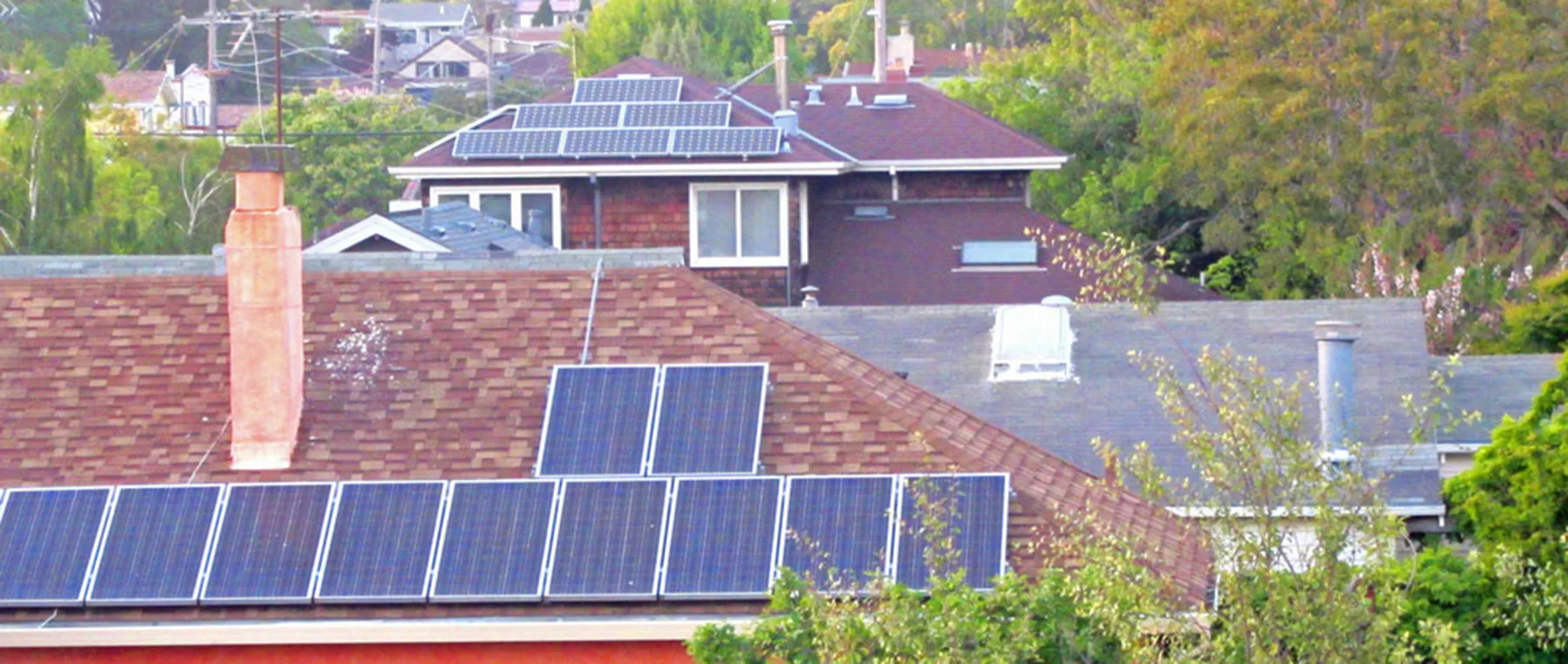EBCE Starts Service to Solar Customers
May 29, 2019
 Solar Homes in Berkeley. Photo by Bentham Paulos
Solar Homes in Berkeley. Photo by Bentham Paulos
East Bay Community Energy aims to deliver clean, renewable energy to our customers at a competitive rate with a focus on local benefits.
Put those goals together and you get Net Energy Metering (NEM), the rate policy that encourages businesses and homeowners to generate their own power. Any form of renewable energy is eligible, though almost all NEM customers in our area use solar power.
Net metering allows customers to ship power out onto the grid when they are generating more than they are using, and buy it from the grid when they need more. They pay for the net, or the difference at the end of the billing period.
This simple accounting technique makes it easy for customers to invest in local clean energy, exactly what EBCE wants them to do.
While service to business, public, and residential customers launched in June and November of 2018, service for net metering customers had to wait until April. Net metering customers have an annual true up date, when the net for the year is calculated. EBCE service started in April for customers with annual true-up dates falling between January and April, and rolls in every two months until all customers are enrolled. Once everybody is on board, the annual true up will be in April for all solar customers.
EBCE held informational webinars for solar customers in March. A recording of the webinar is available at ebce.org/nem.
How EBCE compares to PG&E
While many of EBCE’s net metering program details are the same as PG&E’s, there are two important differences that make EBCE’s program better.
First, that annual true-up process. Customers who go solar after June 2018 (EBCE’s launch date) will get paid for any annual surplus at the retail value of the generation rate, about 10¢ per kilowatt-hour. PG&E pays a “Net Surplus Compensation” rate for surplus power that is tied to the wholesale cost of electricity, about 4¢ per kilowatt-hour.
In other words, we invite our customers to go big. While PG&E’s interconnection requirements limit the total system size to 110 percent of your previous year’s use, our higher payment rate for surplus power means getting close to that cap is more attractive. Under their lower surplus rate, PG&E encouraged customers to size for 80-85 percent of consumption.
We like customer-owned solar because generating more power on our rooftops means we can capture more local economic benefits.
The other improvement is that low-income and municipal customers that went solar after June 1, 2018, will get the retail value for all power generated, plus a bonus of 1¢ per kilowatt-hour. This will ensure that all customers can participate in the clean energy economy, and encourage local governments to be leaders.
The latest figures from the California PUC show that there were 27,578 solar customers in our service territory as of February 28, out of about 550,000 customers. The top areas are Oakland, Fremont, and Livermore, with over 4000 systems each. Livermore has the most generating capacity, with over 39 megawatts, out of 197 megawatts total, while Oakland has the most systems, with 5,819.
Clearly our customers share our values.